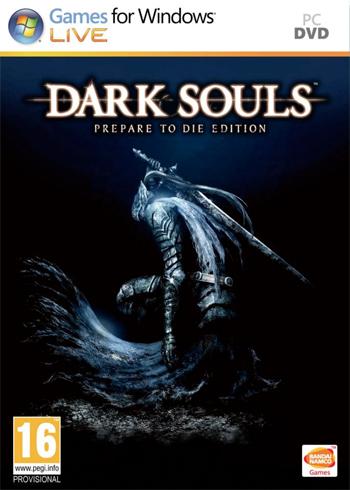
After a furious fight, you round the corner only to be launched off the edge into a chasm by a rolling boulder. You find yourself surrounded by skeletons that reform and rise again every time you strike them down and eventually, they overwhelm you. You are face to face with a black knight, whose sword alone is longer than your whole body. A massive dragon bears down upon you spewing fire.
Welcome to Dark Souls, prepare to die. Recently ported from consoles to PC, Dark Souls is the incredibly difficult successor to the 2009 title Demon’s Souls and it doesn’t pull any punches when it comes to punishing mistakes and weakness.
The story of the game is sparse, and apart from the introductory cut scene, little is directly explained. Much of the tale is told by interacting with other characters and exploring the grim fantasy world of Lordran and the areas surrounding it.
Players take on the role of an undead, chosen by fate to alter the course of history. Players begin weak, underequipped and locked in an asylum for the undead, who have an unfortunate tendency to turn into hollow berserkers. Your chosen class determines starting equipment and attributes, but beyond that, you are free to upgrade any stats and use whatever armor, weapons or spells take your fancy. From the moment you step out of the asylum, you are free to go to any area you can access, but your fresh hero will be unprepared to meet the challenges of some paths.
Scattered around the world are bonfires that serve as checkpoints and upgrade stations where you can level up and improve your equipment. Both of these actions require souls, the main currency of the game, which can be gathered by killing enemies or found around the world on bodies and in chests.
Though players begin as an undead, they can restore themselves to a human form by using humanity at bonfires, which increases your resistance to damage and raises the chances of enemies dropping an item. While in human form, players can also access the multiplayer component of the game; summoning players into their world to help in a fight or jumping into someone else’s game to assist them.
Players with a malicious mindset can also invade another’s world as a black phantom to hunt down and kill others for fun and profit, but be wary as you can also be invaded. Outside of the active multiplayer, heroes can leave behind helpful or deceiving messages, and occasionally players will see the ghostly image of another player’s death. When a hero inevitably meets an untimely demise, they lose all their souls and humanity they were holding and leave behind a bloodstain where they died. Touching the bloodstain can reclaim these but if the player dies once more before reaching it, they will be lost forever.
The gameplay on the whole is solid, the controls don’t feel too clunky and nothing beats the feeling of parrying an attack then following up with a devastating counter. Boss fights feel appropriately epic and are punishing to a fault; one mistimed dodge or greedy attack and you quickly become a red smear on the floor.
Aesthetically, the design of the world is wonderful. Each area has a unique feel to it, the enemies look frightening, and the wonderful orchestral score completes the mood. Unfortunately, the physics engine will sometimes fall flat and you will find yourself sliding off of an edge or stuck on a wall, though these instances are few and far between.
It isn’t always apparent where you are supposed to be going or what your next objective is, and the logic behind some solutions to progressing can be confusing. Players have to be mindful of avoiding tunnel vision. If one strategy isn’t working against a particular enemy, you can try different weapons and tactics, or even find an alternate path that allows you to avoid the fight altogether.
While the game isn’t for everyone, Dark Souls is a well-designed game with great depth and complexity that I would recommend to anyone that enjoys a challenge.








